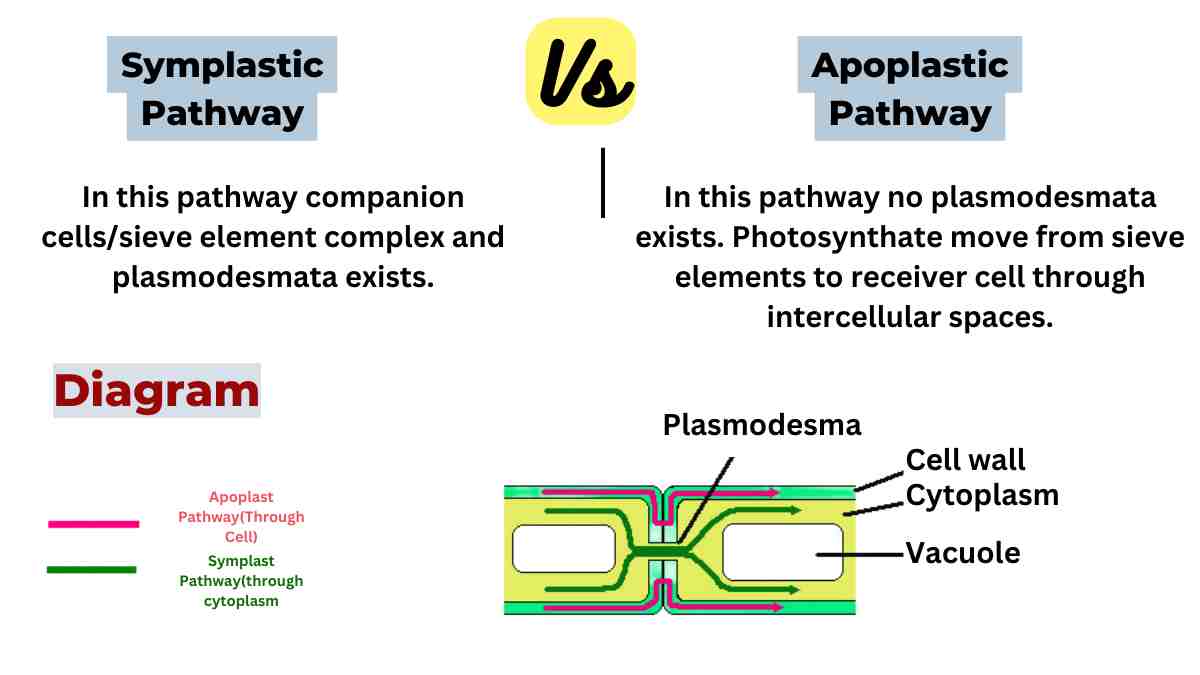The key difference between the symplastic and apoplastic pathways is in the route of movement of water and solutes in plant tissues. The Apoplastic pathway involves movement through non-living spaces outside the cells, while the Symplastic pathway involves movement through the living components of the cells via plasmodesmata.

What is Symplastic Pathway?
The Symplastic pathway refers to one of the routes through which water and solutes can move within plant tissues. It involves the movement of substances through the interconnected living cells of a plant, which are connected by plasmodesmata.
Plasmodesmata are small channels that traverse the cell walls of adjacent plant cells, creating a cytoplasmic continuum between them. These channels allow for the direct exchange of water, nutrients, and other solutes between cells.
In the Symplastic pathway, water and solutes can move from one cell to another by crossing the cell membrane and entering the cytoplasm. Once inside a cell, they can then move from cell to cell through the plasmodesmata until they reach their destination.
What is Apoplastic Pathway?
The Apoplastic pathway refers to the movement of water and solutes through the cell walls and intercellular spaces of plant tissues. It is one of the two main pathways by which water and nutrients are transported within plants, the other being the Symplastic pathway.
In the Apoplastic pathway, water and solutes enter the plant through the root hairs and move through the cell walls of the epidermis and cortex cells, as well as the intercellular spaces between these cells. The movement occurs primarily through passive processes such as diffusion and osmosis. The Apoplastic pathway allows for rapid movement of water and solutes over short distances without the need for crossing cell membranes.
Symplastic vs Apoplastic Pathway
The major difference between symplastic and apoplastic pathway is given below:
| Aspect | Symplastic Pathway | Apoplastic Pathway |
| Definition | Movement of substances through the interconnected cytoplasmic continuum (plasmodesmata) between adjacent plant cells. | Movement of substances through the extracellular spaces between plant cell walls. |
| Barrier | Requires crossing cell membranes via plasmodesmata. | Occurs through cell walls and intercellular spaces. |
| Type of transport | Generally passive, relying on diffusion. | Can involve both passive and active transport. |
| Regulation | Limited control by the plant, primarily driven by diffusion. | More significant in the short-distance transport within tissues. |
| Movement of water | Slower movement of water and solutes. | Faster movement of water and solutes due to less resistance. |
| Importance | More significant in the short-distance transport within tissues. | More important for long-distance transport, particularly in the xylem for water and mineral absorption. |
| Examples of pathways | Symplastic transport within the root cortex. | Apoplastic transport in the xylem vessels. |
